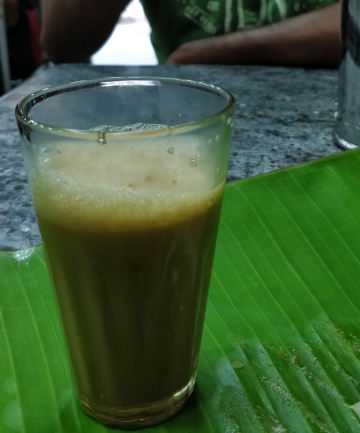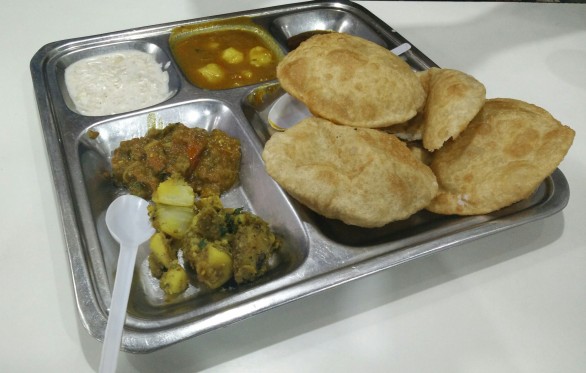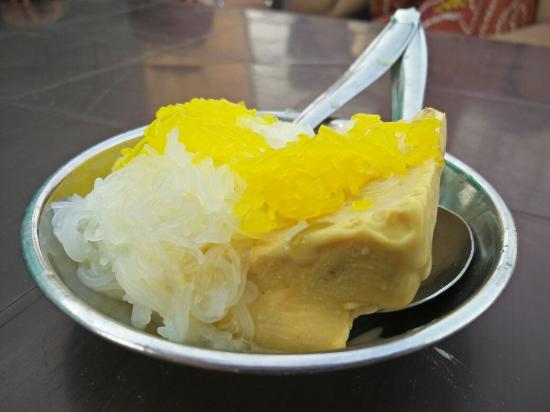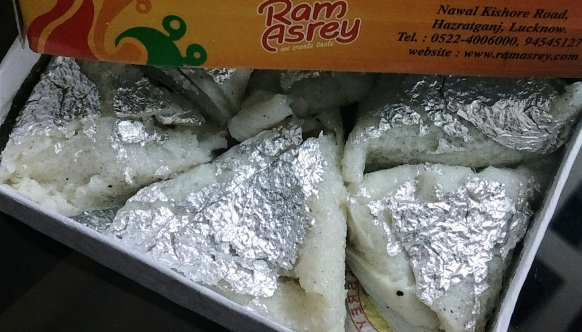There are two types of people in this world: one) who love
Durga Puja, two) who hate Durga Puja. There is another tiny variety though — of
people who hopped over the fence somewhere along the way. I belong to that
category.
Making the switch is not, however, the easiest thing even if
you are a sucker of food, arts, music, and culture — elements that signify the
festival. It takes grit, and a lot of time, to fall in love with the
overwhelming Pujos of Calcutta. But it is not impossible. With a little
planning & preparation, you can enjoy, if not fall in love, with the
beautiful experiences that the festival brings with it.
So let’s get started.
Basics:
Durga Puja begins from the Mahalaya Amavasya, the day before
the auspicious period of navratras, or nine nights of the goddess begins. The
festivities however commence only on the 6th day, called shashti, when the
goddess and the four children are invoked, and lasts until dashami, when she is
sent off with a heavy heart and teary eyes. If you are planning a visit, plan
to reach Calcutta by Pamchami and settle in before the action begins.
Timing:
In my 15 years as an insider at the Durga Puja — after my
marrying a bong boy — if there is one thing I have learnt, it is to get the
timing right. To witness the beauty and grandeur of the art, craft, and spirit
of the festival, you will have to make an effort to beat the locals to it. In a
Puja Pandal, it always pays to be early.
Shashti and saptami mornings are best to go pandal-hopping.
The Puja Pandals are already up but the people have yet to come out in full
force. There is still some space to walk, drive, breathe, the queues are
smaller, and you can take your time to appreciate the themes, decor, aesthetics
and the gods in each pandal.
It is important to know that Calcuttans do not sleep during
the Puja, at least not in the nights. For that is when they are out with
friends and families for a night full of revelry. If crowds intimidate you,
avoid getting out in the night, especially on ashtami and navami, or be ready
to swim in a sea of people and sway in whichever direction the crowds take you.
Commute:
Taxi drivers in Calcutta go crazy during the Pujas. They are
in great demand and the public is ready to pay any price for their services, so
don’t be surprised if they quote obscene amounts. Either hop in or walk off —
they will not wait for you.
A better way to commute is by metro or bus. They are cheap,
take you from point to point and ply all night. Also, be prepared to walk a
lot. Imagine you are in Paris, or Rome, and it will be easier for you. In any
case chances are you’d spot the Eiffel Tower and the Colosseum somewhere along
the road. In fact, Calcutta now has its own Big Ben too: but for the sweat
streaming down every part of your body, you can very well imagine walking the
streets of London.
If commuting into the city from the station, cross the
Hoogly on a boat, and soak in the beautiful skyline of the city, stock up your
lungs with fresh air, and hop in on the taxi at Babu ghat. It will save you
time, effort and a lot of traffic. If you decide to fly in to save travel time,
you can rest assured about it being compensated in the cab. Fares will be
equitable too!
Pandal Hopping:
Pujas in Calcutta revolves around two things Pujo Pendal,
and Thakur. The pandals come in all shapes and sizes. So do the gods. So while
you will have a 100 feet tall Durga at Deshopriyo Park, you will also have a
rojger ginni at Hindustan park. The themes range from surgical strikes to
demonetization, from Bhutanese tourism to a humble village set up, from the
Meenakshi temple in Tamilnadu to the Somnath temple in Gujrat. Then there is
recycling, global warming, deforestation. If the brilliance of Bengal is
visible anywhere, it is in a Puja Pandal.
Every street in Calcutta has a Puja Pandal that you cannot
miss and every para showcases something unique; how do you then decide what to
cover and what to skip? You don’t — just start from one place and join the dots
as you go. It is best to cover the most famous Pandals in the morning, and
meander into smaller ones on the way. They are all interconnected and the
crowds will lead you from one to another. Stay closer to your
home/hotel/residence in the evenings — so that even if you have to walk home
you can.
Do not miss the smaller Pujos in North and South Calcutta,
for it is in these tiny pandals that you’d discover the most beautiful idols,
and most innovative themes.
Some of the lesser known pandals that you should have on
your itinerary are: Mudiali club,
Shib Mandir, Seebak Sangha, 66 Palli, Maddox Square, Jorashonko, Kumhartuli,
Hindustan Park, Durga bari, Jodhpur Park, Dhakuria. Ahiritola, Kumhartuli. You
can thank me later!
Food:
No one eats at home during the Puja. Not that they need to
with a feast laid out at every nook and corner. Lined with stalls selling
everything from biryani to korma, from coffee to cola, from ice cream to
sweets, the streets of Calcutta transform into food courts during the festival.
While most of the country fasts during this time of the year, Kolkata feasts.
Use the opportunity to sample Calcutta’s lip smacking
variety of street food. Gorge on the tangy Puchkas, try the zingy jhaal muri,
taste the aloo kabli, and stuff yourself with cups of mishti doi, and dozens of
rasgullas and shinghara. When you are done with street food (I never am), get
on with chicken korma, biryani, kheer and kulfi, and later to noodles, rolls,
momos, and more mishti doi.
The best thing about eating so much is that the walking
offsets the effects — at least it digestion part of it. So when you are hungry
again, head to the evergreen Park Street where, open from noon till well after
midnight, the iconic eateries of Calcutta await you. Choose from Mocambo or
Peter Cat, or walk into Bar-B-Que or Trincas. But ready for long queues: the
whole city is out to eat during the Pujas.
Exit:
Why would somebody need to plan the exit from a city? Well,
because it is Calcutta and it is Puja. And I cannot leave you wandering on the
crowded roads without a taxi — if I have got you in, I better get you out too!
So, first and foremost, never plan a train or flight out on
Dashami. The city swells that day like a river on the rise; there are no cabs,
there are no autos, there are hardly any buses either. Unless of course you
have a friend who is willing to sacrifice the whole day battling traffic jams
and barricades (trust me, no self-respecting Bengali will do this), it’s best
to leave a day before, preferably in the day. Else, you can always walk back
from the airport after a missed flight, or sleep over at the Howrah station
post a missed train. The city will always have space for you.
Also featured in Huffington Post












